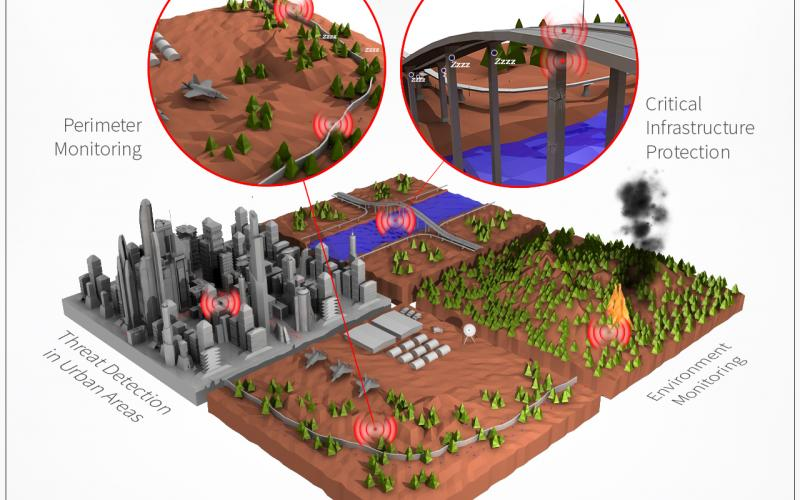DARPA’S Take on the IoT Battery Problem: N-ZERO
DARPA’S Take on the IoT Battery Problem: N-ZERO
- Last Updated: December 2, 2024
Yitaek Hwang
- Last Updated: December 2, 2024



IoT is a broad term, encompassing a wide range of Applications across consumer, commercial, government, and military sectors. Some IoT applications require powerful sensors and devices with high-bandwidth connections, generating huge volumes of data that’s fed into machine learning algorithms to create helpful insights. Other IoT applications require less powerful sensors and devices that can last extended periods of time on battery life, perhaps using LPWAN technology to communicate since high-bandwidth isn’t as critical.
DARPA’s N-ZERO program is aimed at the latter, specifically in a military setting. The key idea is to reduce power consumption by enabling dormant mode, such that the machine only “wakes up” when prompted by an event of interest.
The idea is effectively similar to how many of the LPWAN technologies extend battery life. SigFox and LoRa-based systems send updates to its gateways only few times a day, minimizing the power needed to take in data and transmit accordingly. Cellular IoT protocols such as LTE-M and NB-IoT also use extended discontinuous repetition cycle (eDRX) and power saving mode (PSM) to become idle and save power.
The subtle difference between LPWAN devices and N-ZERO lies in the military’s focus on persistent sensing. On battle grounds, troops must detect vibration, light, sound, or other signals to act quickly. Instead of scheduling the sensors to send data at fixed intervals, these military-grade sensors must be constantly receiving input, yet retain the capacity to enter dormant mode to conserve power. The research is focused on two areas:
- Asleep-yet-aware sensors that awaken upon an interrupt event.
- RF receivers that constantly listen for transmission, but consume little power when a transmission event isn’t occurring.
The goal is to consume less than 10 nW during this dormant phase, a 1000x improvement over our current state-of-the-art sensors. The 10 nW threshold was chosen since the battery passively loses 10 nW of power on its own, also known as passive self-discharge.
On the receiver side, DARPA wants to gradually sense up to -100 dBM signals. The technology seems to be a variant of code division multiple access (CDMA) technology, which is what our cell phones use. We can expect this to be similar to cellular IoT or even Ingenu’s proprietary technology.
Finally, the team wants to limit false positive rates, citing a specific goal of detecting a generator less than 3 feet away in a rural setting with 95% accuracy. High accuracy is important, not only for military reasons, but also for extending battery life as transmission causes more power consumption.

DARPA hopes to generalize this technology to commercial uses in detecting damage to critical infrastructure, automobiles, industrial control system, medical devices, and climate monitoring systems. Given how Siri’s technology was born out of a DARPA program, we can look forward to how this will add onto existing LPWA solutions.
The Most Comprehensive IoT Newsletter for Enterprises
Showcasing the highest-quality content, resources, news, and insights from the world of the Internet of Things. Subscribe to remain informed and up-to-date.
New Podcast Episode

The State of Smart Buildings
Related Articles



